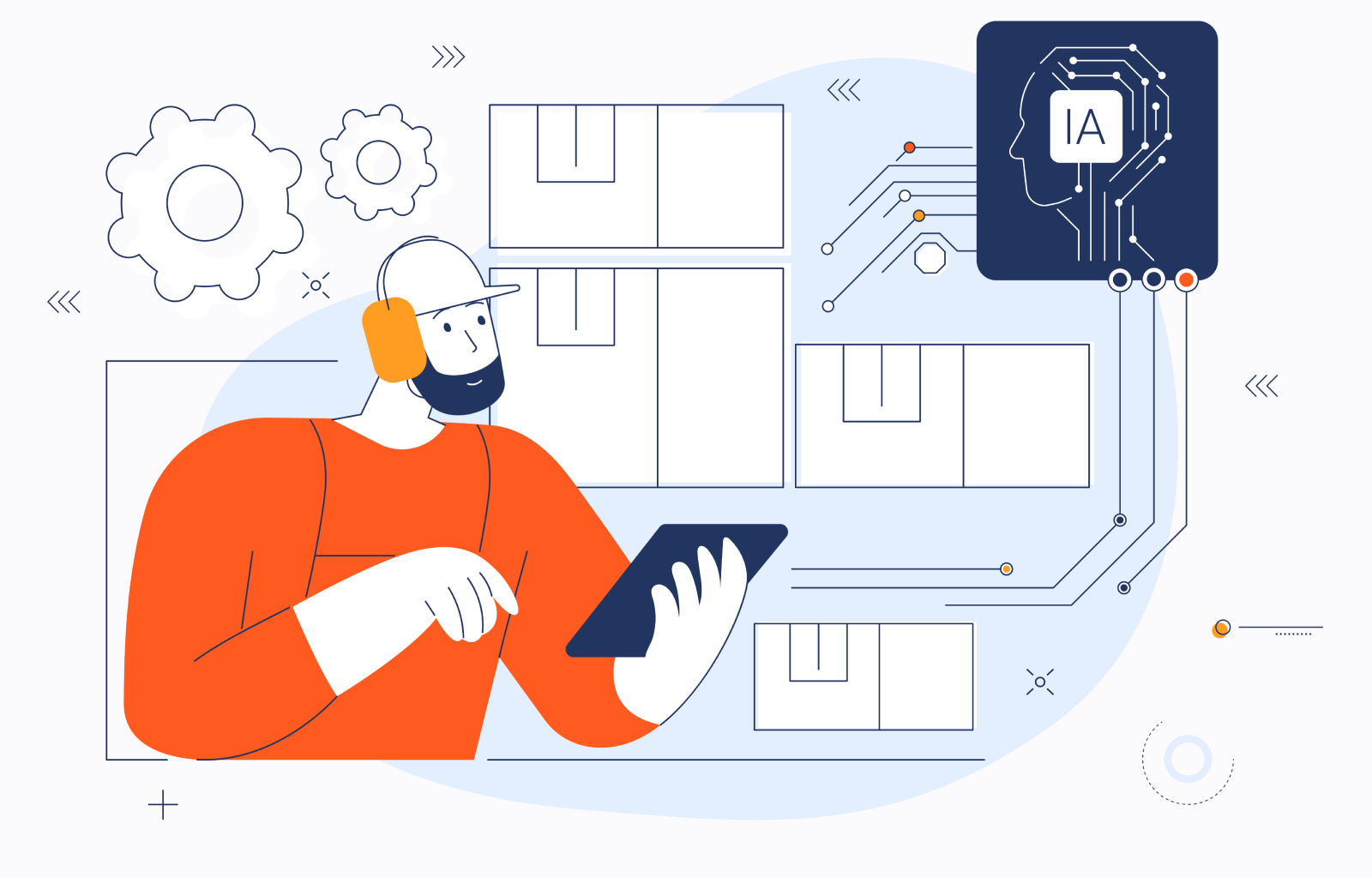AI Inventory Optimization: How to Integrate AI into Your Current Inventory Management System

It’s 2 AM, and you’re staring at another stockout alert on your phone. Your top-selling product just went out of stock. Again. Meanwhile, you’ve got thousands of dollars worth of slow-moving inventory taking up valuable warehouse space.
Maybe that’s not the exact issue you’ve been struggling with on an ongoing basis. Yet, you’re not alone in situations like this. Almost all small and medium retail businesses struggle to align their inventory with demand. Luckily, AI can fix that—if you use it right.
Why Integrate AI into Existing Inventory Systems?
Even if you’re not at the point where inventory management is sabotaging operations, there are still reasons to consider integrating artificial intelligence as a proactive measure.
Traditional Systems Can’t Keep Up with Modern Demand Patterns
…which have become complex and change rapidly. These days, you’re dealing with flash sales, social media-driven demand spikes, supply chain disruptions, and customers who expect instant availability across multiple channels.
Traditional inventory systems rely on historical averages and basic seasonal adjustments. Meanwhile, inventory demand forecasting with AI accounts for dozens of variables, including weather patterns, competitor pricing, social media trends, economic indicators, regional preferences, transportation, and logistics, among others.
Manual Forecasting Creates Costly Human Errors
Without AI in supply chain management, errors and stock imbalances become more frequent. Even your best inventory managers can only analyze a handful of factors at once, and they’re fighting against cognitive biases that lead to consistent errors.
Your team might order too much winter gear because last year’s cold snap is still fresh in their memory, while underestimating spring demand, which is rising due to a seemingly unrelated factor. Miscalculations compound quickly, tying up your working capital or sending customers straight to your competitors.
AI Provides Real-Time Market Intelligence
Just like real-time inventory tracking, it enables businesses to adapt quickly to market fluctuations. AI processes thousands of internal and external signals simultaneously. It pays attention to your sales velocity, competitor pricing, weather forecasts, economic indicators, social media sentiment, and seasonal trends all at once.
More importantly, AI learns from every transaction. When it predicts a demand spike and gets it right, it strengthens those prediction patterns. When it’s wrong, it adjusts its algorithms immediately. Your system gets smarter with every sale, every return, and every market shift.
AI Integration Doesn’t Eat Up Your Investment
Most businesses think that integrating AI means starting over. In reality, there’s no need to replace your existing software. Most AI inventory systems can work with your existing ERP, WMS, and POS, making your current infrastructure intelligent.
Your team continues to use the same interfaces they are familiar with. Your workflows stay intact. But now your reorder points adjust automatically based on predicted demand. Your safety stock levels optimize themselves. And your orders are generated with high precision.
AI Uncovers Profit Opportunities Hidden in Your Data
Your inventory data contains patterns and opportunities that no human can spot. But algorithms can. Inventory management with AI lets you discover that customers who buy Product A are 70% more likely to purchase Product B within two weeks, allowing you to adjust your inventory mix accordingly.
AI identifies slow-moving items before they become dead stock. It suggests optimal markdown timing to clear inventory while maximizing recovery. It reveals which products should be bundled together to increase average order value. And there’s much more of what it’s capable of.
Steps to Integrate AI into Your Inventory System
The gap between knowing you need AI and actually implementing it successfully comes down to execution. Most businesses jump straight to choosing AI tools without laying the proper groundwork. A roadmap to more efficient AI in inventory management would look like this:
- Audit your system and data. Access your tech stack to know your integration options. Examine your current data quality across sales history, supplier information, seasonal patterns, and inventory movements to identify the gaps.
- Define clear goals and KPIs. Establish specific KPIs that matter for your performance: reduce stockouts by 30%, decrease excess inventory by 25%, or improve forecast accuracy to 85%.
- Select the right AI tools and algorithms. Evaluate options based on how well they integrate with your existing systems, their track record in your industry, and their ability to scale with your growth.
- Adjust the workflows and train your team. Provide training that focuses on interpreting AI insights and using them for strategic planning. But make sure to fully set up the system first.
- Monitor and improve performance. Set up monthly reviews to analyze prediction accuracy. Identify areas where the system needs refinement. Adjust parameters based on business changes or market shifts.
- Partner with experienced AI developers. The partner delivers the right AI tools and develops custom algorithms tailored to your needs. AI staff augmentation is a flexible option that provides you with access to AI experts and tech specialists. They can either join your team or take full responsibility for development and integration on your partner’s side.
Companies that approach integration systematically—with proper planning, realistic timelines, and stakeholder buy-in—see measurable improvements within the first quarter of deployment.
Benefits for Businesses from AI-Optimized Inventory Management
Once AI integration is complete, the financial impact becomes unmistakable. Among other things, businesses experience:
- More accurate demand forecasting. This means fewer emergency orders, reduced stockouts that frustrate customers, and elimination of dead inventory that drains your working capital.
- Dramatic reduction in carrying costs. Thanks to smart stock level management, you’re no longer tying up cash in excess inventory. AI identifies the optimal inventory levels for each stock-keeping unit.
- Accelerated order fulfillment. Fast-moving items get positioned for quick access, while slow movers don’t clog your primary picking zones. It reduces pick times and gets orders out the door faster.
- More agile supply chains. When market conditions shift, your AI system adjusts stock levels instantly rather than waiting for the next planning cycle, adding to resilience and profitability.
But the real transformation happens when these benefits compound over time, creating competitive advantages that traditional inventory management simply cannot match.
Conclusion
AI inventory optimization gives you something every business owner craves: predictability. You’ll know what to order, when to order it, and how much you need with scientific precision. Your customers get the products they want when they want them. Your cash flow improves because you’re not over-investing in slow movers.
The technology exists. The integration process is straightforward. The ROI is proven. The only question left is: How much longer will you tolerate the stress of inventory management when the solution is right in front of you? If you are ready to act, contact our team, and let’s initiate that positive change.
FAQ
Implementation typically takes 3–6 months from initial assessment to full deployment. A lot depends on the current state of your system and the requirements for the AI tool, including its features, complexity, and integrations.
The investment varies significantly based on your business size and complexity. Custom AI solutions typically range from $30,000 to $80,000. Building entire AI inventory systems from scratch typically ranges from $50,000 to $300,000. However, in some cases, integrating an off-the-shelf solution may be a suitable and more affordable option.
We guarantee full compliance with industry standards and design software with security in mind. That includes secure coding practices, clear data governance policies, reliable APIs and tooling, etc.
Most inventory AI systems update their predictions daily using new sales data. Major model retraining typically occurs on a monthly or quarterly basis. Businesses with highly seasonal products or rapidly changing market conditions may need more frequent retraining—potentially every 4–6 weeks during peak seasons.
Contact us

